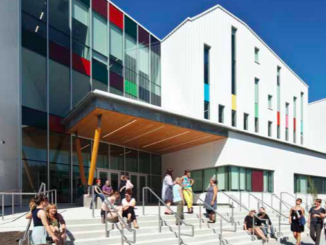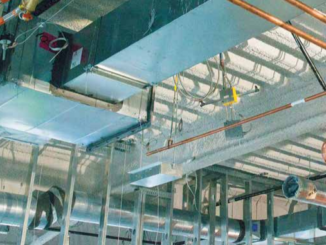These days, all the cool kids are green, and by green I mean environmentally focused, willing to innovate, and striving towards sustainability. At this stage of the game, the added cost of materials and practices that give a building a longer life, fewer operating costs, and a lucrative business case for the owner are par for the course. No one is shocked when a LEED building costs more, nor are they wide-eyed with wonder when low-flow fixtures, no-VOC paint, or HRV systems show up in the truck. The landscape has officially changed for the better.
Though materials often steal the limelight, technology is another area that can improve sustainability on a project by improving productivity, shortening lead and building times, helping account for labour, and assisting to avoid costly errors.
The complexity of projects and the era of fast-tracking require the type of organization and co-operation BIM provides.Collaboration across disciplines, cloud-based access, and realtime updates are the saving grace of many projects (the larger, the more so), and the ready integration of outside data and software make the process almost seamless.
I say “almost” because there is the matter of learning curve even in the age of smartphones and Pokemon Go, there are still people not entirely comfortable with digital project management and software evolution, and fair enough—with innovation comes a flooded market and in most respects it is hard to ascertain what is truly valuable and what is not.
The good news, however, is twofold: most BIM providers are creating their interfaces with simplicity and first-time users in mind; and, the market is flooded with tech-savvy graduates dying to get their hands on some piece of software on a day-to-day basis, so hiring someone isn’t impossible.
Overall, the ROI is outstanding. Streamlining the process and saving time normally spent manually sharing information with 17 different people are obvious money-savers, but BIM also offers the opportunity to see material and labour choices on screen before committing. Testing construction techniques, modelling material selections, and eliminating design errors all contribute to a successful ROI and to sustainability, too, while we are on the subject.
SMACNA National has produced a paper called, “The Business Case for BIM,” authored by David E. Quigley, managing director for Emerson Research, under the direction of the SMACNA HVAC Contractors’ Council Steering Committee. The paper is a summary of research into why contracting firms use (or don’t use) BIM, the benefits, the challenges, and ultimately, the business case for using it.
According to the paper, the committee discovered three important things: 1. everyone in the industry has a different definition of BIM 2. the majority of sheet metal and HVAC companies with annual gross incomes of $8 million or more, working on mid-sized to large HVAC commercial construction projects, and who have not integrated BIM into their practice are further ahead than they realize, and 3. BIM has evolved from “intelligent 3D CAD objects and systems within a virtual model used for spatial co-ordination … to any process or activity in a construction workflow that involves the reuse of data to improve efficiency and productivity.”
Researchers came up with some additional benefits I didn’t even think of, including the ability to easily scale shop production from high to low volume, increased bidding opportunities, including larger and more complex projects, and recognition as a leader in technology, capabilities, and BIM expertise.
Ultimately, the benefits of BIM for all sized businesses are vast and worth a read. Members can download the paper at www.smacna.org or request it from the SMACNA-BC office. In the meantime, read up on BIM options, construction technology news, and sustainability through digital construction management. You’ll be glad you did, and by glad I mean rolling with the cool kids on the road to prosperity.



